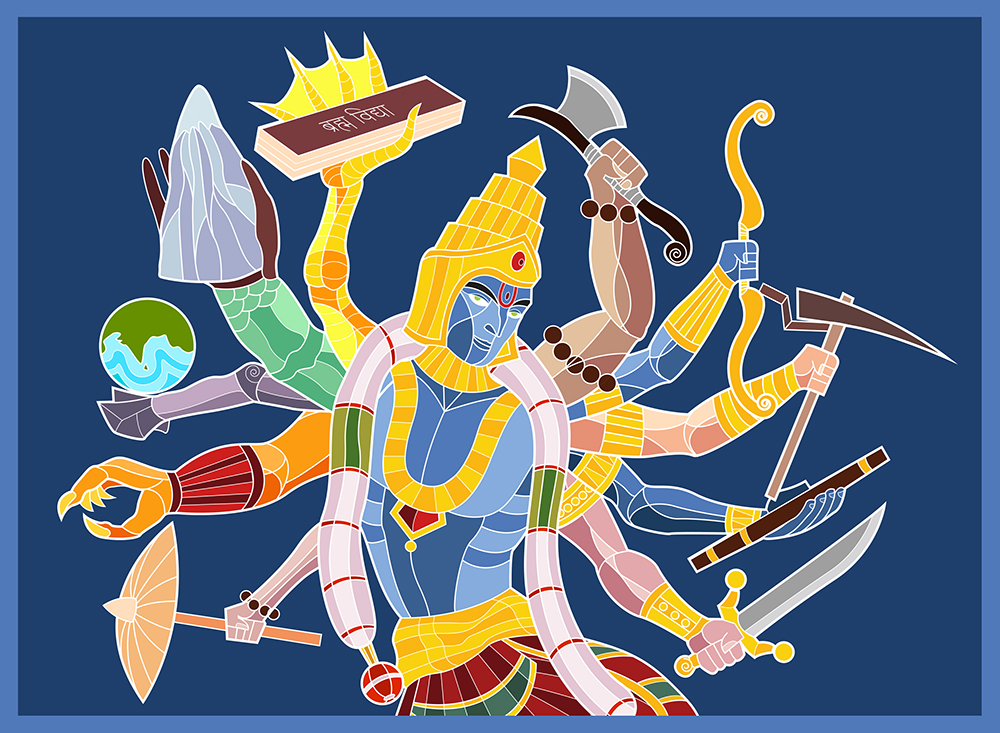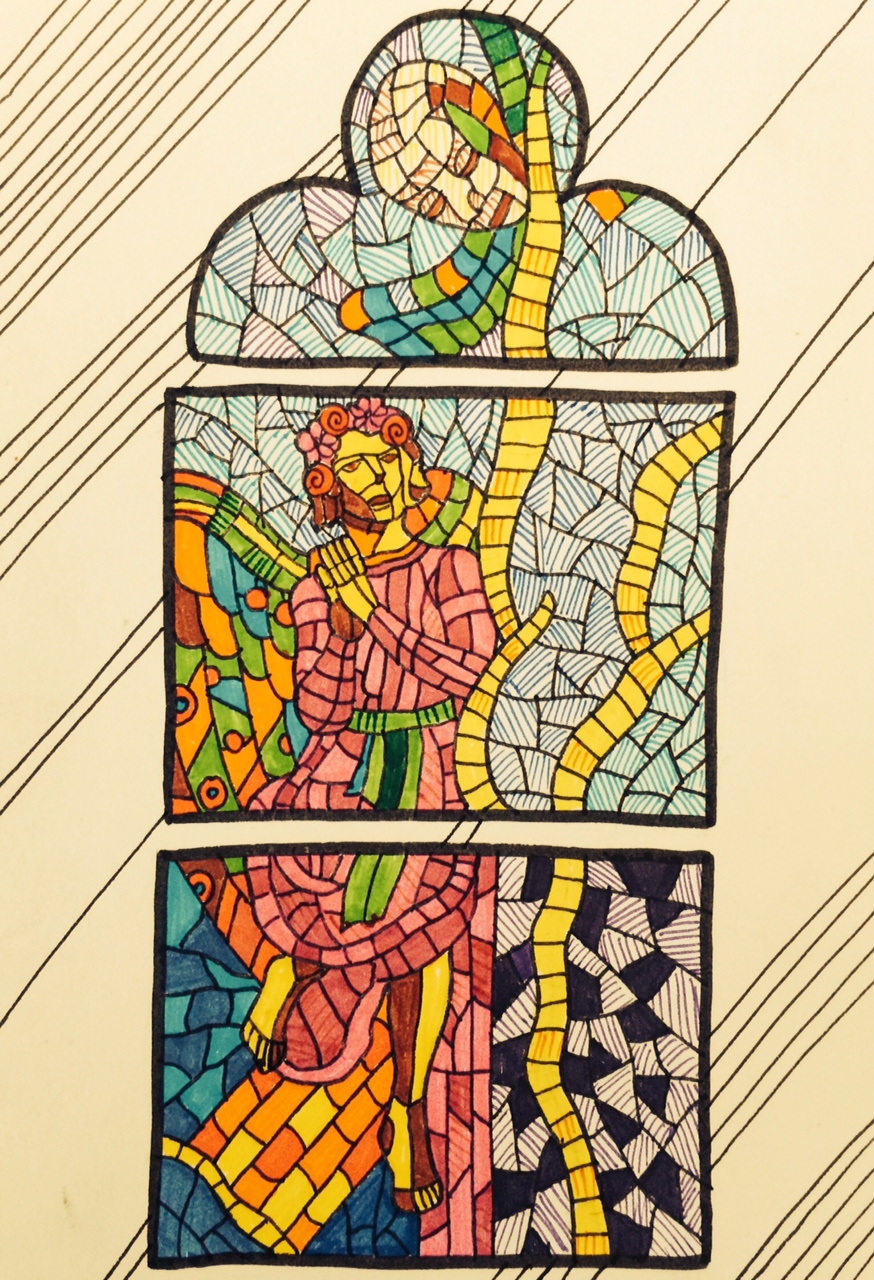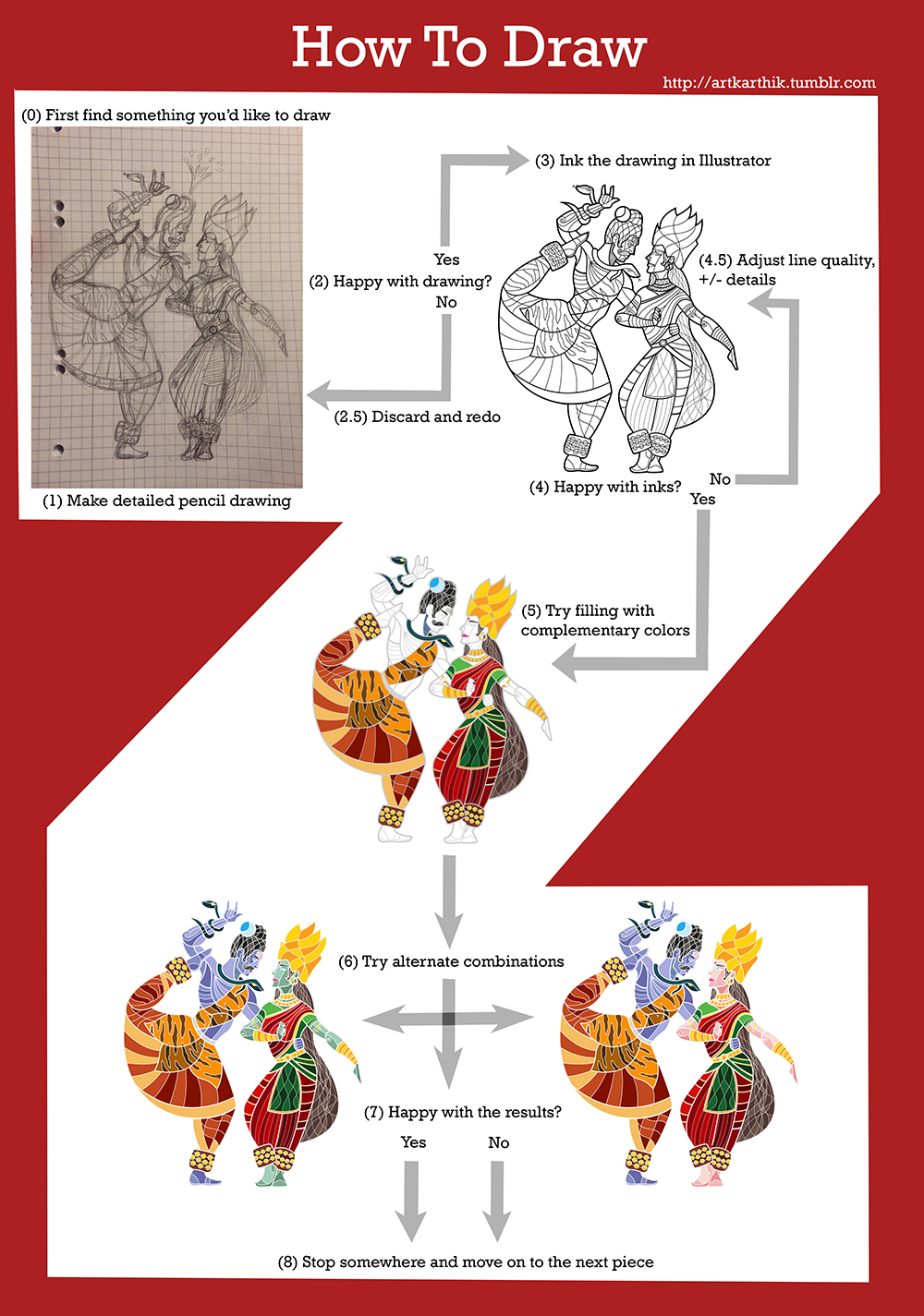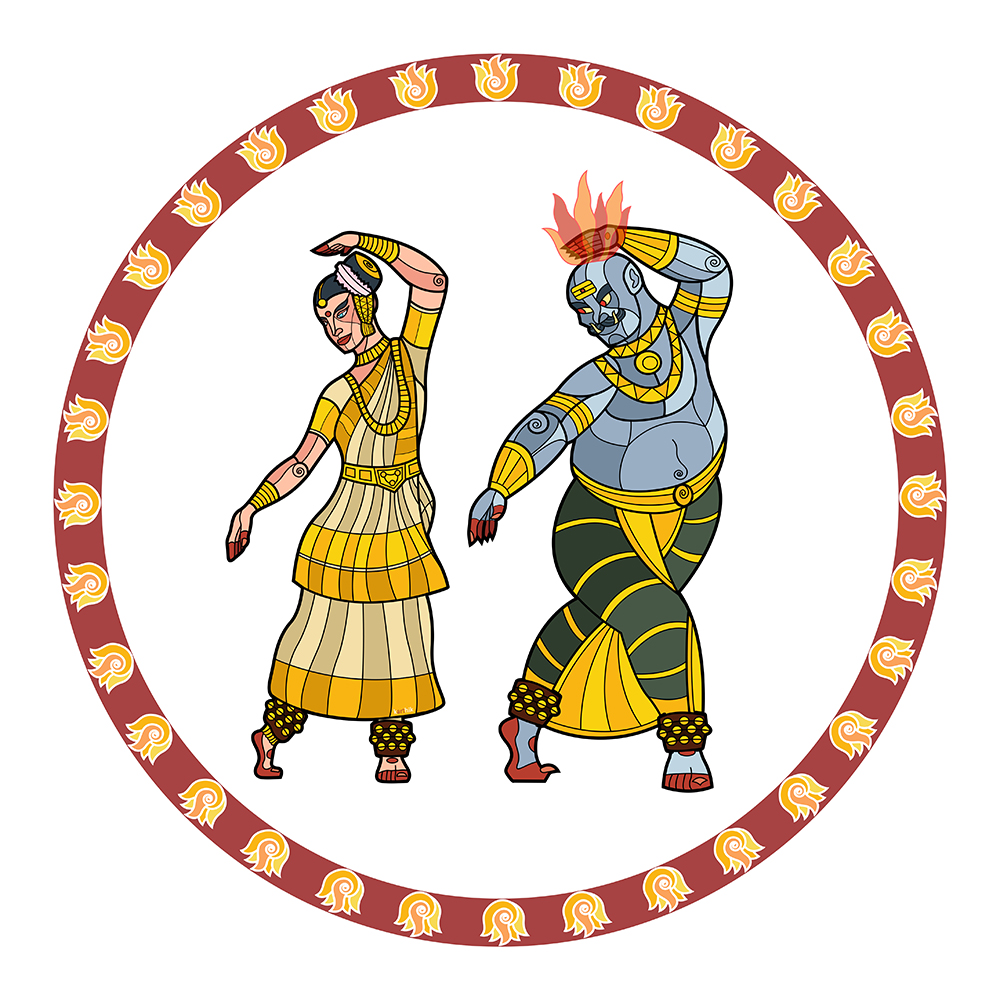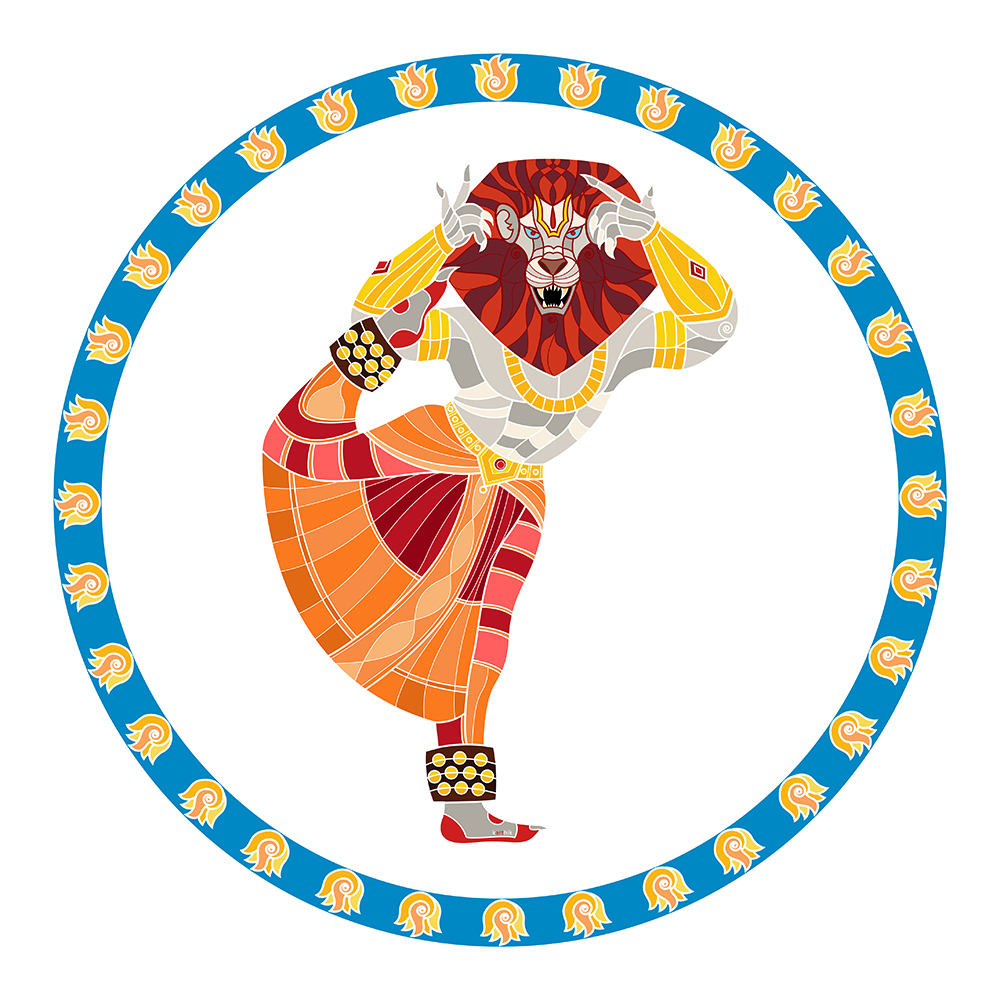Ravana and the Rudra Veena
Although he is the primary antagonist of the Ramayana, Ravana is often depicted as having many exemplary qualities.
He is the son of the sage Vishrava with the daitya princess Kaikesi, grandson of Pulastya (one of the original saptarishis, who are the mind-born sons of Brahma) and great-grandson of the creator Brahma.
He is shown to be a great scholar (having studies the 4 vedas and 6 shastras), a master of the 64 ancient vedic arts, and the creator and master of the Rudra Veena.
He is also painted in a slightly sympathetic light, having grown up during the time that the asuras were defeated in battle by the devas, where his mother marries the sage Vishrava just to have powerful children who could challenge the devas and restore the asuras to their previously lost splendor. The story also goes into detail about how Ravana was constantly overshadowed by his older step-brother Kubera and how he would see his mother constantly crying over the pitiable state of the asuras, making him take a vow of vengeance against the devas who put his mother and family in this position.
The story goes on to say that to get boons of power, he plucks off his own heads to create a new form of veena and uses his own veins as strings to play devotional songs in praise of Shiva, hoping to win the gods favor.
Called Dasagriva/Dasamukha till this point, he then acquired the name Ravana. He is then said to have gone on a roaring conquest, with the symbol of the Veena on his banner, defeating the devas in a decisive battle and dominating both the human and divine races. At the zenith of his power, it was said that he could even command the rising and setting of the sun.
According to the story, very few people could defeat him in battle for very peculiar reasons. Upon worshipping Shiva, Ravana had asked for a boon of immortality. When told that this was not possible, he instead asked to be invincible in battle against the devas, gandharvas and wild animals. He didn’t consider humans to be much of a threat and hence did not bother to ask to include them. Rama could defeat and kill him owing to this minor oversight. Certain versions of the story say that Vali, the vanara king of Kishkintha had the boon that he would gain half the strength of any enemy he faced in battle and that he was able to defeat Ravana without even being aware of it. The only other person who had defeated Ravana was Karthaveeryarjuna (the same one who antagonized Parashurama) on the banks of the Narmada river, having himself acquired divine blessings and powers.
Since drawing the actual veena with heads and veins would have been a bit gory, I opted for the traditional route of showing the ten-headed Ravana composing songs and ragas on the veena. I also thought of alternate ways of showing the ten heads of Ravana (one of his iconic traits), such as stacking them one over the other like bowling pins, or in an abstract pattern, because I really didn’t like the traditional depiction of unbalanced approach of 4 heads on one side and five on the other with one in the middle.
I also considered showing each of his faces with a different emotion [such as Kaam (lust), Krodha (anger), Moha (delusion), Lobha (greed), Mada (pride), Maatsarya (envy), Manas (the mind), Buddhi (intellect), Chitta (will) and Ahamkara (ego)], but realized that some of these were too abstract to show visually.
So until I can think of a better way of showing Ravana’s ten heads, he stays in his traditional depiction.
The character of Ravana has always been a challenge to draw, due in large part to his many arms and legs which always ends up making him look really awkward. Here’s an attempt at tackling that challenge!

